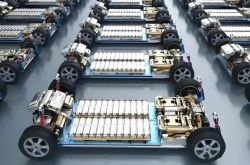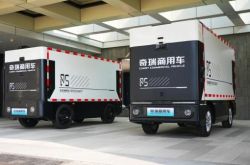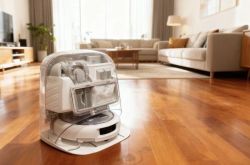DJI's Foray into New Markets Fails to Impress Consumers
![]() 11/24 2025
11/24 2025
![]() 510
510
Shouldn't the journey have been smooth sailing, only to descend into a chaotic scramble instead?
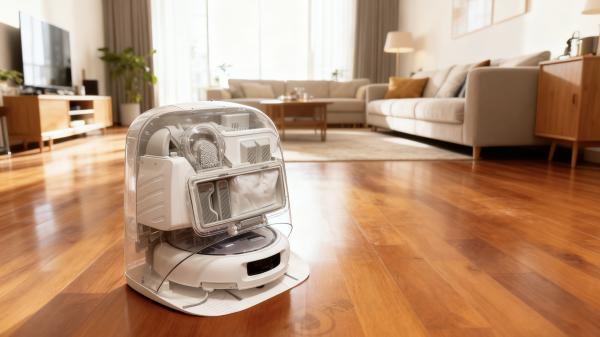
DJI has once again ventured into uncharted territory, this time setting its sights on the 3D printing market.
However, DJI's recent foray into the robot vacuum cleaner industry hasn't gone as smoothly. Not long ago, the company launched its robot vacuum cleaner, and while some die-hard fans eagerly paid for and supported the product, they were soon met with a series of official price cuts, leaving them feeling regretful.
Some netizens reported experiencing a price drop on the very day they placed their order. Others found that their DJI ROMO had become a thousand yuan cheaper within just a month. Some even discovered that the same product was cheaper when they were in the process of seeking compensation for the price drop.
Not only that, but those who meticulously calculated and finally made the purchase after much deliberation may also encounter issues with the DJI ROMO. Problems such as overly sensitive obstacle avoidance, difficulty returning to the base, and excessively long drying times have surfaced. Consumers who were initially drawn to its appearance may find it hard to maintain their affection for the product.
DJI's decision to enter the robot vacuum cleaner market may have been driven by its strong technological reserves and the vast market potential. However, talent poaching by some companies seems to have thrown a wrench in the works, accelerating DJI's crossover process.
Yet, DJI's initial performance in this new industry has been far from impressive. Perhaps the market is teaching newcomers a valuable lesson: even industry benchmarks must tread carefully when entering a new field.
Will the price reductions ever come to an end?
Recently, DJI invested in Intelligent Factory, a 3D printing company, officially stepping into the consumer-grade 3D printing industry.
Regarding this new venture, DJI stated, "This investment is based on our optimism about the development potential of consumer-grade 3D printing technology and industry growth, aligning with DJI's consistent philosophy and forward-looking strategic layout."
Venturing into the 3D printing industry suggests DJI's ambitious plans. However, not long ago, it had just entered the robot vacuum cleaner industry, and its debut product left many consumers disappointed.
This is because, after the launch of DJI's robot vacuum cleaner ROMO, it experienced repeated price cuts within three months, leaving its most loyal fans feeling betrayed by the official price drops.
On October 9th, Xiao Liu ordered the DJI ROMO P water tank version on Taobao for 5,048 yuan. That evening, the price dropped to 4,691 yuan, 357 yuan cheaper than during the day. She promptly returned it under the seven-day no-reason return policy and repurchased the same product.
Two days after the robot vacuum cleaner arrived, on October 14th, Xiao Liu found that the product had dropped further to 4,299 yuan, 392 yuan cheaper than her purchase.
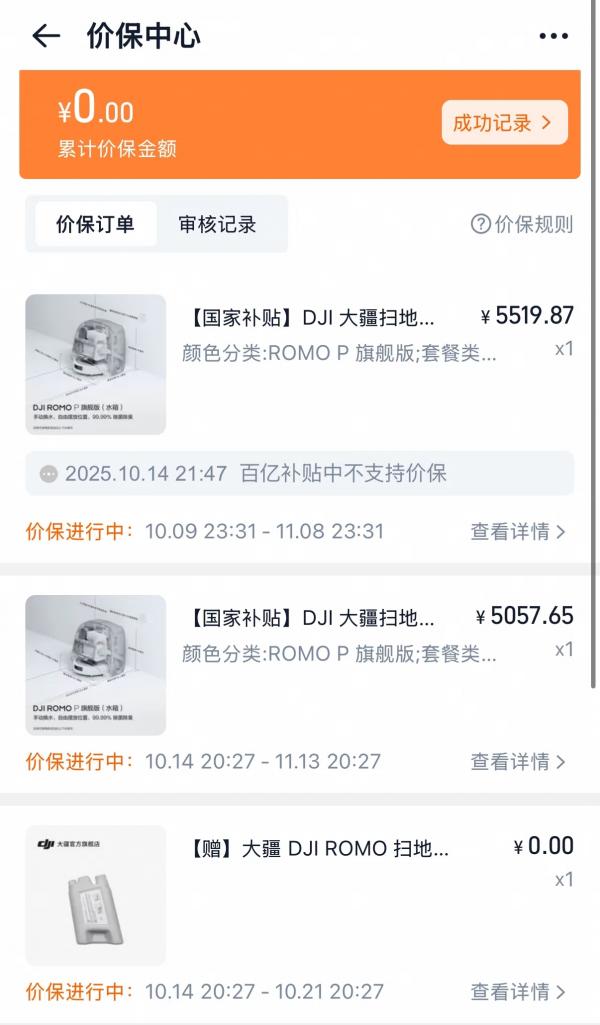
Fortunately, Xiao Liu's purchase was still within the price protection period, so she promptly contacted the official and was refunded the difference.
Some consumers received full refunds for the price difference due to being within the price protection period, while others, who bought earlier, could not enjoy compensation.
After DJI's robot vacuum cleaner was launched in August, Sasa immediately spent 5,500 yuan on Douyin to purchase the DJI ROMO P water tank version. Within less than two months, the price dropped by nearly 1,000 yuan.
Upon learning of the price drop, she immediately contacted customer service to seek compensation but only received an apology—no refund for the difference.
Online shoppers buying DJI products should pay attention to the price protection period; offline shoppers may face an even tougher refund process.
In mid-September, Li Li purchased the DJI ROMO P automatic water refill version for 6,289 yuan at a DJI store in Shanghai.
A month later, Li Li found the product had dropped to 5,175 yuan, so she promptly contacted the store for a refund. During the process, the price dropped again to 4,798 yuan, 1,491 yuan cheaper than her initial purchase.
In the end, the store negotiated with Li Li and refunded her 701 yuan, less than half of the price difference.
How does the product perform?
DJI's repeated price cuts on its robot vacuum cleaner have left some potential buyers hesitant, adhering to the principle of "buy high, not low," and remaining in a wait-and-see stance.
On the other hand, consumers who have already purchased the DJI ROMO may also encounter issues during use.
The floor tiles in Xiao Jin's home have a striped mesh area. During mapping, the DJI ROMO misidentified the tile patterns as obstacles, following the patterns erratically and messing up the route planning.

Xiao Jin restarted it several times, but the robot vacuum cleaner kept moving in that area, so he eventually returned it.
Netizen Wusi also told Pan Ge, "Places like floor outlets and corners may not be cleaned properly because DJI is too sensitive to obstacles, requiring manual cleaning."
However, he also noted, "This at least saves some worry; previously, using other brands, the obstacle avoidance was poor, and I often found things messed up when I got home."
DJI's overly sensitive obstacle avoidance has caused trouble for some consumers. Meanwhile, the product often freezes when trying to return home.
Xiao Tang told Pan Ge, "After cleaning, when the robot vacuum cleaner tries to return to the base, it shows that the driving wheel is stuck by a foreign object. But when flipped over, there's nothing there, yet the system keeps reporting errors."
Afterward, Xiao Tang restarted the product multiple times, but one wheel remained locked, so he had to get an official replacement. Afterward, the issue did not recur.

The DJI ROMO, which can't see clearly or return properly, has left some consumers frustrated. Even when the product works normally, they may still suffer.
Netizen A Jiao said, "My home is over 140 square meters, with the kitchen set as a no-cleaning zone. The DJI ROMO took over five hours to sweep and mop, and another five hours to dry the mop, making noise all day. Although not loud, it's still low-frequency noise."
In response, a DJI official said, "The machine offers energy-saving, standard, and long-lasting drying modes, ranging from 2 to 8 hours, with the actual duration adjusting based on ambient temperature and humidity."
Meanwhile, some netizens said, "Deep drying of the mop is a highlight of the DJI ROMO, preventing bacterial growth and odors."
Why venture into the cleaning market?
From the relentless price cuts after launch to the occasional issues faced by consumers, DJI's entry into the robot vacuum cleaner industry seems to have gotten off to a rocky start.
While the unique transparent body design has garnered some attention, frequent price promotions seem to reveal DJI's lack of confidence.
However, DJI, which has already excelled in drones and action cameras, why enter the robot vacuum cleaner industry to compete head-on with rivals? The reasons seem to be threefold:
First, DJI has technological advantages in fields related to robot vacuum cleaners.
Obstacle identification is key for robot vacuum cleaners. Having deeply cultivated the drone market for years, DJI has accumulated much technology in visual navigation, motor control, and obstacle avoidance, making a robot vacuum cleaner well within its capabilities.
Pan Ge learned that the DJI robot vacuum cleaner uses a visual plus laser radar design, with a pair of binocular fish-eye cameras in front and three laser radars (two in front, one in back).
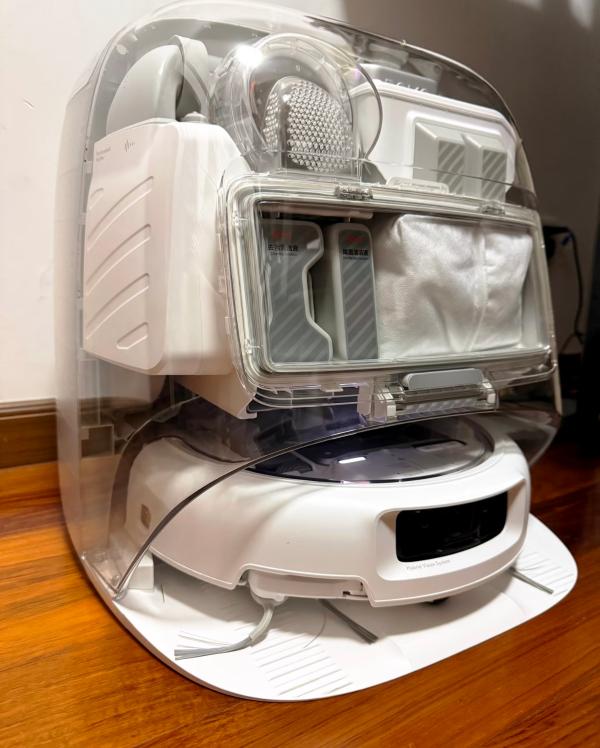
Second, the robot vacuum cleaner market has vast potential, offering an opportunity to gain a share.
A report by Jia Shi shows that in 2024, China's smart robot vacuum cleaner shipments reached 5.389 million units, up 6.7% year-on-year. Shipments for the entire 2025 are expected to reach 5.658 million units.
Meanwhile, in terms of product penetration, China's robot vacuum cleaner penetration is only 6.9%, lower than 15% in the U.S. and 8% in Germany and Japan, indicating huge future potential.
Third, some companies, seeking technological secrets, have continuously poached talent from DJI, prompting DJI to fight back.
For example, after DJI invested in the 3D printing company, former employee and Puzhu Technology founder Tao Ye said, "I'm 99.9% sure it's because talent movements touched the former boss's sensitive spot."
Prior to this, Insta360 CEO Liu Jingkang and Ninebot founder Wang Ye had both vaguely mentioned companies using so-called "finger-breaking plans" to poach talent and extract commercial and technological secrets, with DJI, as an industry leader, being a prime target.
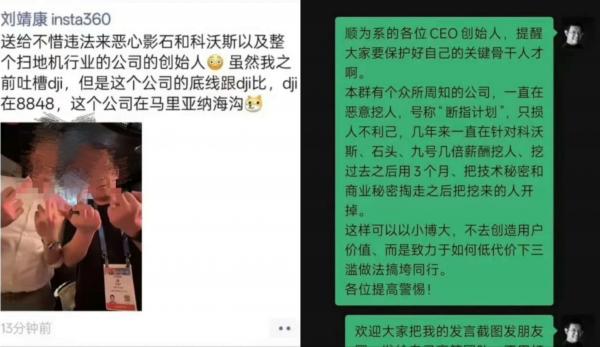
Although the leaders did not name names, in action, Dreame issued a reward for information on "finger-breaking plans" in June this year. Meanwhile, in August, Dreame announced its entry into the drone market, directly targeting DJI's core business.
Thus, DJI's launch of the robot vacuum cleaner seems driven by both confidence in seizing opportunities and displaying strength, as well as necessity in retaliating against talent poaching.
Meanwhile, from the repeated price cuts after the robot vacuum cleaner's launch, it seems DJI may not have been fully prepared for this foray into the cleaning market.
However, this initial setback in entering the industry may not be a bad thing for DJI. After all, learning from mistakes can lead to better development.



